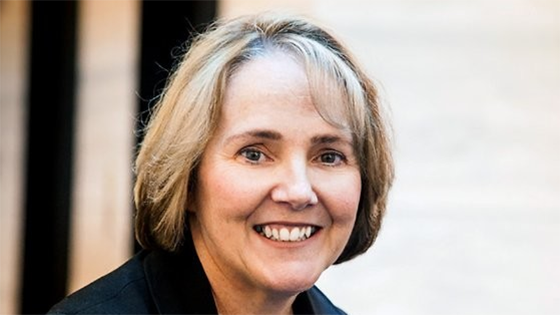Double materiality requires new lens on sheep and wool disclosures

Dr Robyn Leeson, Principal of STR Consulting, has more than 20 years’ experience in sustainability including sustainable strategy development, carbon, economic and environmental services. Her current focus is on helping corporate and other clients improve their reporting and disclosure practices, including in materiality determinations.
Dr Leeson was Vice Chair of the GRI’s Global Sustainability Standards Board for six years, until March this year. GRI (Global Reporting Initiative) is headquartered in the Netherlands and is responsible for setting the most widely used standards for sustainability reporting.
Having written her first reduction plan for greenhouse gas emissions (GHG) 25 years ago as Manager of City Sustainability with the Melbourne City Council, you could be forgiven for thinking consultant Dr Robyn Leeson may be feeling a little weary or cynical about sustainability reporting.
You’d be wrong.
“This work is a marathon, not a sprint, and I’m eternally optimistic that we can rise to the challenge and do better than we are now,” Dr Leeson said.
“That time with Melbourne City feels like the Jurassic period! The conversation on sustainability has changed a lot since then, it’s become mainstream and it’s an existential discussion now, which is good.
“I think the challenge for agriculture now is feeding more people and with better nutrition. Doing that in a changing climate with fewer resources is critical. We just need to get better at that.”
Measuring impact
During the foundational days of the Sheep Sustainability Framework, Dr Leeson assisted in the first impact-based materiality assessments with stakeholders to determine what topics to focus on.
Materiality, as it is applied here, is the principle of understanding and accounting for the impact of an organisation and its activities on the environment, society and economy.
Dr Leeson said the key was articulating how sheep and wool impacts the outside world. How does industry impact on aspects like greenhouse gas emissions and water, as well as the people who work in the industry and live in the communities where it operates?
Double materiality “opposite sides of the same coin”
“A developing space is the use of double materiality, a relatively new lens that the European Union (EU) has recently released standards on, which requires companies over a certain size domiciled in the EU to disclose this information.”
Dr Leeson used the example of climate change, water use and animal welfare to explain double materiality as “opposite sides of the same coin”, and said it was important to consider how impacts flow back to the industry as risks and opportunities to the business model.
“If we had GHG or carbon emissions reported as an impact, for example, then there’s also opportunity there in terms of carbon markets, so that’s a very stark financial measure,” she said.
“If we look at water use in agriculture, an organisation might be taking water for processing or raising animals, which may not initially seem highly material from an impact perspective, but if they’re doing that in an area where there’s significant water stress and you may have to buy water, that can become financially material to the business.
“The industry has an impact on animal welfare, and one of the risks in getting that wrong is around biosecurity, which comes back as a financial risk to industry. They’re opposite sides of a coin, so double materiality requires more consideration of those relationships.”
Climate change focus
There is also considerable work underway in terms of scenario planning for climate change and how businesses factor in what is financially material. Dr Leeson said Treasury was considering the adoption of mandatory reporting for Australian businesses on climate disclosures, including targets, metrics, risks, governance and transition planning.
“What that means in terms of how businesses cope with water security in the Murray Darling Basin, or storm events or extreme heat, for example,” she said.
“The Framework currently reports on climate-adjusted figures using indicators from ABARES, but there is more work that can be done in providing information that businesses can use to understand the implications and meet these new obligations.”
Information on climate change is useful to all stakeholders in the sheep and wool industry, she said, and is just one of many elements measured for materiality that are connected.
“If regions are getting hotter and drier, what does that mean for live export and transporting stock by road? A lot of these issues start to cascade in and out of each other – if you poke one area of the Framework, you’ll get a bulge somewhere else,” Dr Leeson said.
“The good thing about having a single Framework is that the whole industry is discussing how we can tease out some of these material impacts and the risks and opportunities that flow back to businesses in the sheep and wool value chain. If we respond to one particular challenge, to what extent does that undermine or support the solution to another?”
More information
Contact:
Resources: